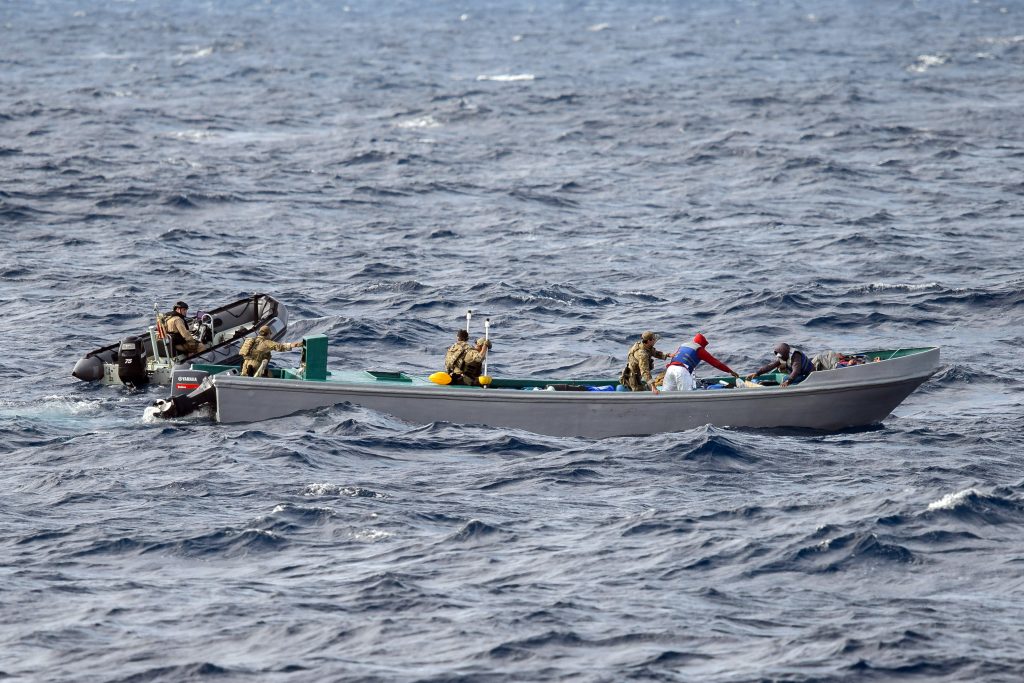In the ever-evolving landscape of U.S. foreign policy, one of the most pressing issues has been the fight against drug trafficking. The recent deployment of military assets, including the USS Gerald Ford, to the Caribbean has sparked significant debate about the nature of these operations and the role of “drug boats” in facilitating the flow of narcotics into the United States. This article explores what drug boats are, how they operate, and the broader implications of their targeting by U.S. forces.
Understanding Drug Boats
Drug boats are vessels used by drug cartels and criminal organizations to transport illegal narcotics across international waters. These boats vary in size and sophistication, ranging from small fishing boats to large cargo ships equipped with advanced technology to evade detection. The primary purpose of these vessels is to move drugs—primarily cocaine, methamphetamine, and heroin—from production regions in South America to consumer markets in the United States and beyond.
According to reports, many of these boats operate under the cover of darkness or in remote areas where law enforcement presence is minimal. They often use false hulls, hidden compartments, and sophisticated communication systems to avoid radar and satellite surveillance. Some even employ decoy signals to mislead tracking systems.
How Drug Boats Operate

The operation of drug boats involves a complex network of actors, including smugglers, local authorities, and international cartels. Here’s a breakdown of the process:
-
Production and Packaging: Cocaine, for example, is typically produced in countries like Colombia, Peru, and Bolivia. Once produced, it is packaged in large quantities and prepared for transport.
-
Transportation: The drugs are then loaded onto boats, which can be either owned by the cartel or rented from local fishermen. These boats often travel through international waters, making it difficult for law enforcement to intercept them.
-
Smuggling Routes: Drug boats frequently use routes that take advantage of geographic features, such as the Caribbean Sea, the Gulf of Mexico, and the Pacific Ocean. These routes are chosen based on factors like distance, weather conditions, and the likelihood of interception.
-
Delivery: Upon reaching the destination, the drugs are offloaded onto smaller vessels or transported via land. In some cases, the drugs are hidden in legitimate cargo, such as agricultural products or construction materials.
-
Money Laundering: The proceeds from drug sales are often laundered through financial institutions, real estate, and other legitimate businesses to obscure their origin.
The Role of the U.S. Military in Targeting Drug Boats

In recent months, the U.S. military has taken a more active role in combating drug trafficking, particularly in the Caribbean and the eastern Pacific. The deployment of the USS Gerald Ford, along with other naval assets, marks a significant escalation in this effort. According to the Pentagon, these operations aim to disrupt the flow of drugs and protect national security.
However, the methods used to target drug boats have raised concerns among legal experts and human rights advocates. The use of airstrikes, for instance, has led to questions about the legality of such actions under international law. Critics argue that without clear evidence of drug trafficking, these strikes may violate the principles of due process and proportionality.
The Impact on Regional Security

The increased military presence in the Caribbean and the eastern Pacific has had a ripple effect on regional security. Countries like Venezuela, Colombia, and Nicaragua have expressed concern over the potential for escalation. Venezuelan President Nicolás Maduro has accused the U.S. of using drug trafficking as a pretext for intervention, while Colombian officials have called for greater cooperation in addressing the issue.
The situation has also highlighted the need for stronger international collaboration in combating drug trafficking. While the U.S. has taken a more aggressive stance, many experts believe that long-term solutions require a combination of military action, economic development, and diplomatic engagement.
The Future of Drug Boat Operations
As the U.S. continues its campaign against drug trafficking, it remains to be seen how effective these operations will be in the long run. While the targeting of drug boats has disrupted some supply chains, it has also led to increased violence and instability in affected regions. Moreover, the use of military force raises ethical and legal questions that must be addressed.
Looking ahead, there is a growing consensus that a more comprehensive approach is needed—one that includes not only military action but also investment in alternative livelihoods for communities involved in drug production. By addressing the root causes of drug trafficking, the U.S. and its allies can work toward a more sustainable solution to this global challenge.
Conclusion
Drug boats play a critical role in the global drug trade, facilitating the movement of narcotics from production zones to consumer markets. While the U.S. has taken a more aggressive stance in targeting these vessels, the effectiveness and legality of such actions remain subjects of debate. As the fight against drug trafficking continues, it is essential to balance military intervention with long-term strategies that address the underlying causes of the problem.
Stay updated with the latest news on drug trafficking and U.S. military operations by following our coverage.
Author: John Doe
Title/Role: Senior Investigative Journalist
Credentials: With over 15 years of experience covering national security and international affairs, John has reported on major events from Washington, D.C., to the front lines of conflict zones.
Profile Link: LinkedIn Profile
Sources:
– Pentagon Statement on Drug Boat Strikes
– BBC News: U.S. Military Deployments in the Caribbean
– Inter-American Dialogue: Drug Trafficking Analysis
Related Articles:
– The Rise of Drug Cartels in South America
– U.S. Military Strategy in the Caribbean
– International Responses to Drug Trafficking
Call to Action:
Explore today’s headlines and stay informed about the ongoing battle against drug trafficking and its impact on global security.












More Stories
US Trending News: The History and Legacy of Zoo York in Streetwear Culture
Understanding ‘You Got That Right’ in The New York Times: Context and Implications
How to Claim Your Joy in League of Legends: A Step-by-Step Guide